The new V&A closes the gap between the super-hyped 2012 Olympics and a lost London
The V&A East Storehouse is the latest addition to join the London College of Fashion and Sadler’s Wells East in the ‘new’ Stratford. Its range of artefacts is as serendipitous as it is stupefying – and all the better for that, writes Jonathan Glancey
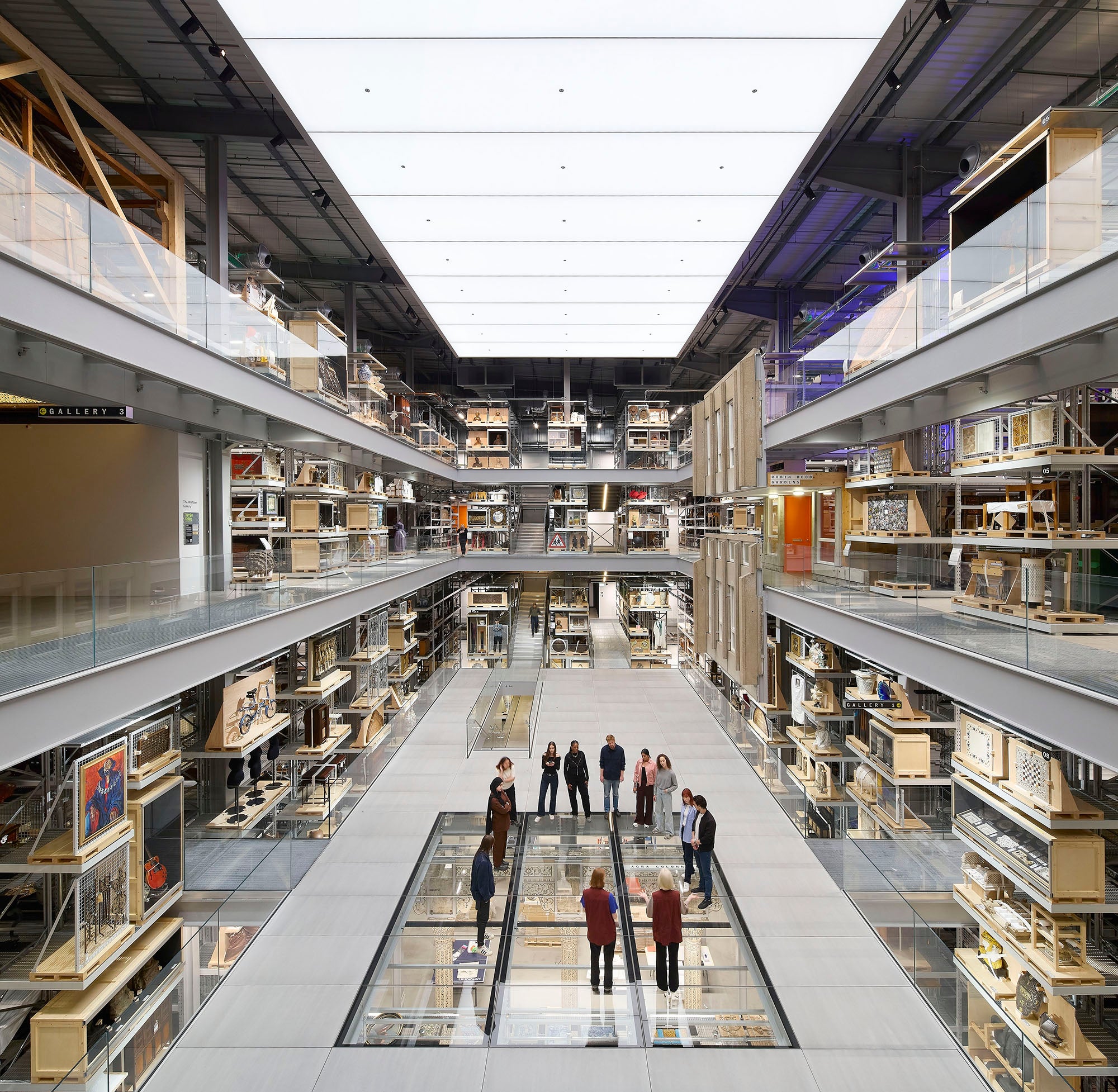
Where should the curtain rise for the public opening of the V&A East Storehouse in Stratford, east London? Perhaps it should be here, in front of what must be the world’s largest Picasso. The artwork, a stage front cloth for the 1924 Ballets Russes production of Le Train Bleu, was designed to roll up and out of sight, if not from the imagination, as Cocteau’s satirical ballet choreographed by Bronislava Nijinska sprung to life, its swimmers, tennis players and weightlifters dressed by Coco Chanel leaping across a Cubist French Mediterranean beach.
This painted marvel is displayed in solitary splendour, and to devastating effect, in a voluminous blacked-out gallery in the depths of the V&A’s captivating new outpost, freely open to the public. The site, containing a regimented forest of pallets, is home to more than 250,000 objects, 350,000 books and 1,000 archives owned by the nation, many rarely, if ever, seen in public before.
The Picasso front cloth captures something of the very essence of the world’s largest museum of applied and decorative arts and design; it is an arresting work of studied art and applied craft demanding deft technical skills.
Diaghilev had seen Picasso’s energetic Deux femmes courant sur la plage in his Paris studio. Two years later, he commissioned the painter Aleksandr Sharvashidze to make a copy 30 times the size of the original for Le Train Bleu. The piece, weighing 350kg, had to be raised from its gargantuan wooden crate and hung from the gallery ceiling by a squad of V&A technicians.
The team will be back to replace the Sharvashidze front cloth with an even bigger example of its type, painted by Natalia Goncharova for the Ballets Russes’s 1926 London production of Stravinsky’s The Firebird. It seems fitting that Goncharova was associated with the Russian avant garde “Everythingism”, or “Allness” (Vsechestvo) movement, whose aim was to mix cultural traditions from around the world and through history while blurring boundaries between original and copied work.
What, after all, is the V&A, an offspring of the Great Exhibition of 1851, other than a colossal warehouse of anything and everything that has caught its curators’ eyes, or been landed in it and there to be clocked and copied and to inspire new creative adventures?
Yet, even the colossal V&A building Queen Victoria laid the foundation stone of in 1899 was unable to contain the sheer wealth of objects drawn across five millennia that has continued to find a place in what Sir Roy Strong, its former director, described memorably as an “extremely capacious handbag”.
From 1979, the excess contents of the nation’s handbag were hoarded in the labyrinthine Blythe House, an Edwardian Baroque colossus built originally as the Post Office Savings Bank headquarters, that somehow made itself invisible beside the Olympia exhibition halls of West Kensington.
This was a largely secret world of curators, archivists and conservationists visited by colleagues, scholarly researchers and those in the know. Strong observed: “Surely Blythe Road – which is a marvellous building – should not just be a dumping ground but an exciting new complex for the public.”
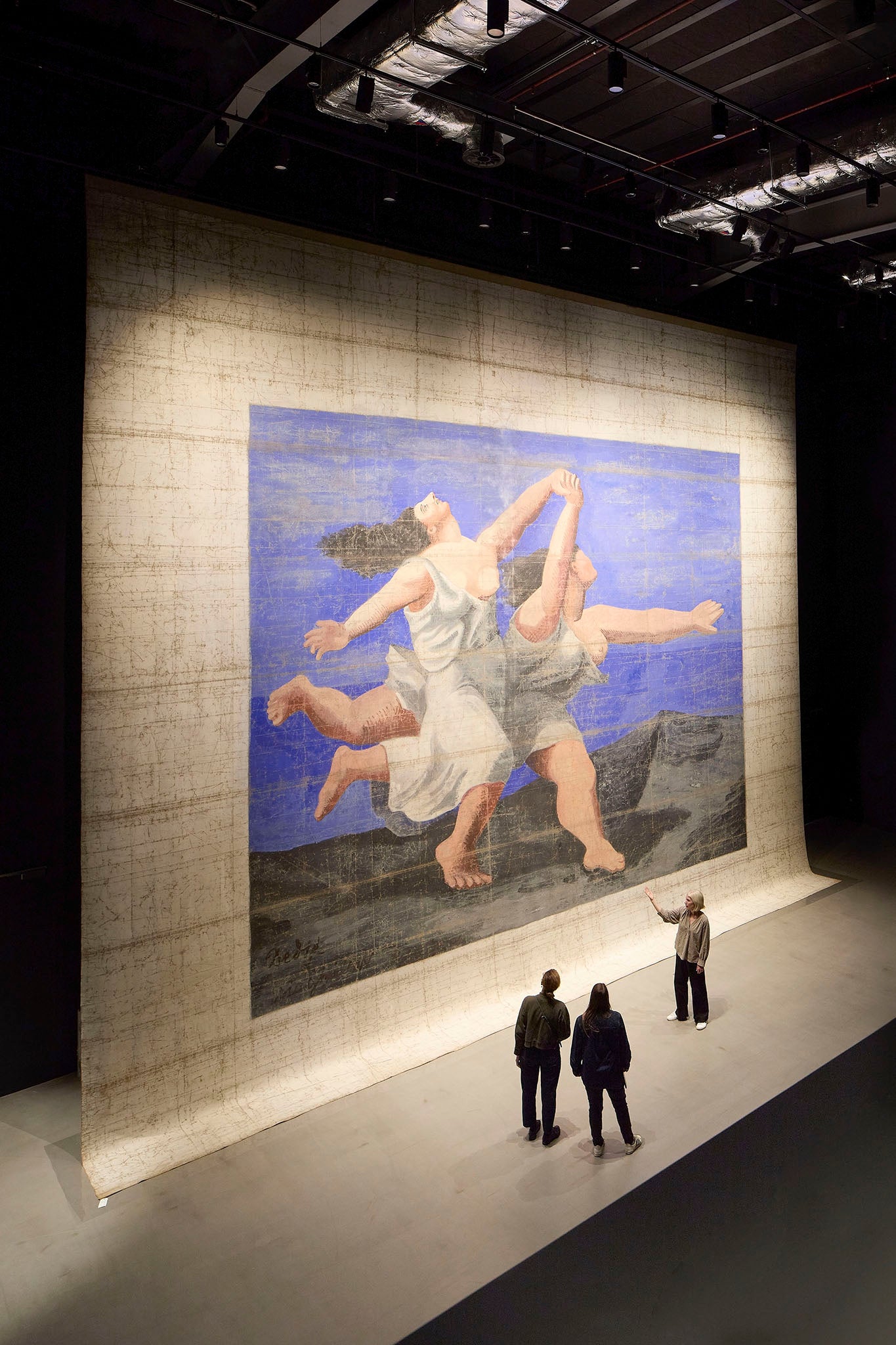
Well, here is that exciting new complex for the public, some decades on, in east rather than west London. V&A East Storehouse is necessarily enormous, and yet it occupies no more than a quarter of Here East, the former and completely transformed 2012 London Olympics media centre.
The V&A’s quarter share is effectively a four-storey building within a building, a refined, functional and subtly lit design by the New York architects Diller Scofidio + Renfro teamed with Austin-Smith:Lord, a British practice, and the structural engineers, Arup.
The lead American architects are best known for the part they played in the creation of Manhattan’s hugely popular High Line walkway, a one-and-a-half-mile-long public park set on the elevated trackbed of an abandoned freight railway. Since it first opened in 2009, the High Line has brought abundant new life to what had been a down-at-heel stretch of Manhattan. Hard to believe today with the High Line coping with 8 million visitors a year, or twice the number the V&A South Kensington received in 2018-19, its busiest year to date.
“The trick”, says Tim Reeve, deputy director of the V&A, has been to balance “what for us was an opportunity and a necessity. We needed to move from Blythe House [a government building scheduled for conversion into what will probably be high-end flats] and we’d been talking with the Greater London Authority (GLA) and the London Legacy Development Corporation about the role we might play in the regeneration of the Queen Elizabeth Olympic Park and areas around it. Do we find a less expensive warehouse out of London, perhaps, or something different in London, an immersive public building that could be not just a museum store but also a source of creativity, a free public resource available to anyone and not just those with the right credentials and open 365 days a year?”
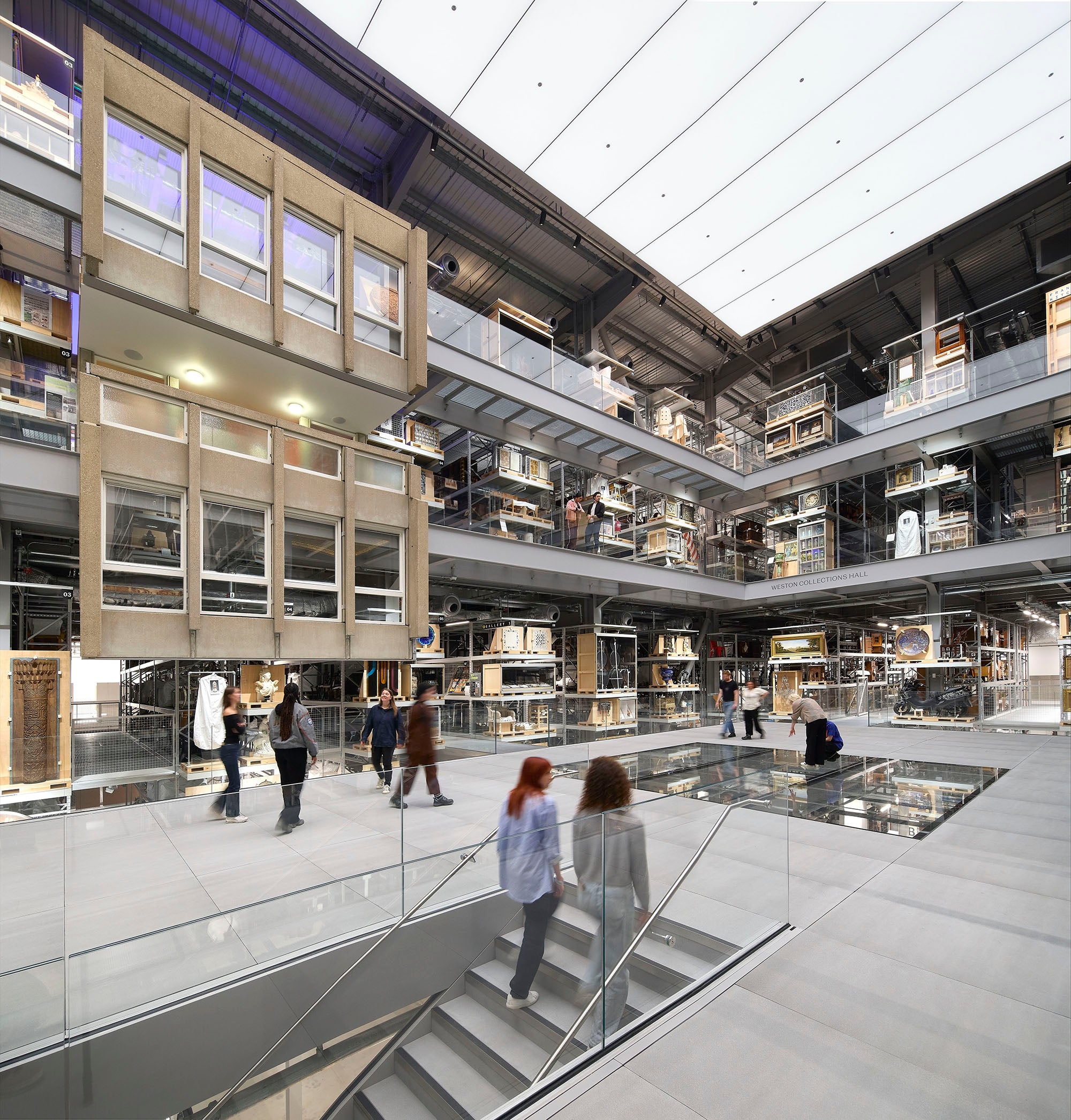
Reeve, who also leads the museum’s east London venture with both the Storehouse and the nearby V&A East Museum opening next year, adds: “Storehouse will be back-of-house to V&A East as well as our laboratory, our conservation studio, a public stage, a place for schools to engage with and to connect with east London’s long and growing tradition of creativity. It’ll be like using the architecture as a physical search engine, a 3D version of googling. You’ll be able to order online whatever you want to see here, and we’ll bring it up to show you in special study rooms or take you to see it if it’s too big.”
This will be like being granted wishes by a genie with an expertise in art, craft, design and the making of things. Seventy new members of staff will be on hand to assist. The range of things here, as you would expect of the V&A, is as serendipitous as it is stupefying. Walking through the main internal “air lock” conservation doors into the four-storey enclosed court at the core of the building, your eyes are drawn this way, that way, up, down through a glass floor, to a hoard of wonderful and even rather mad things.
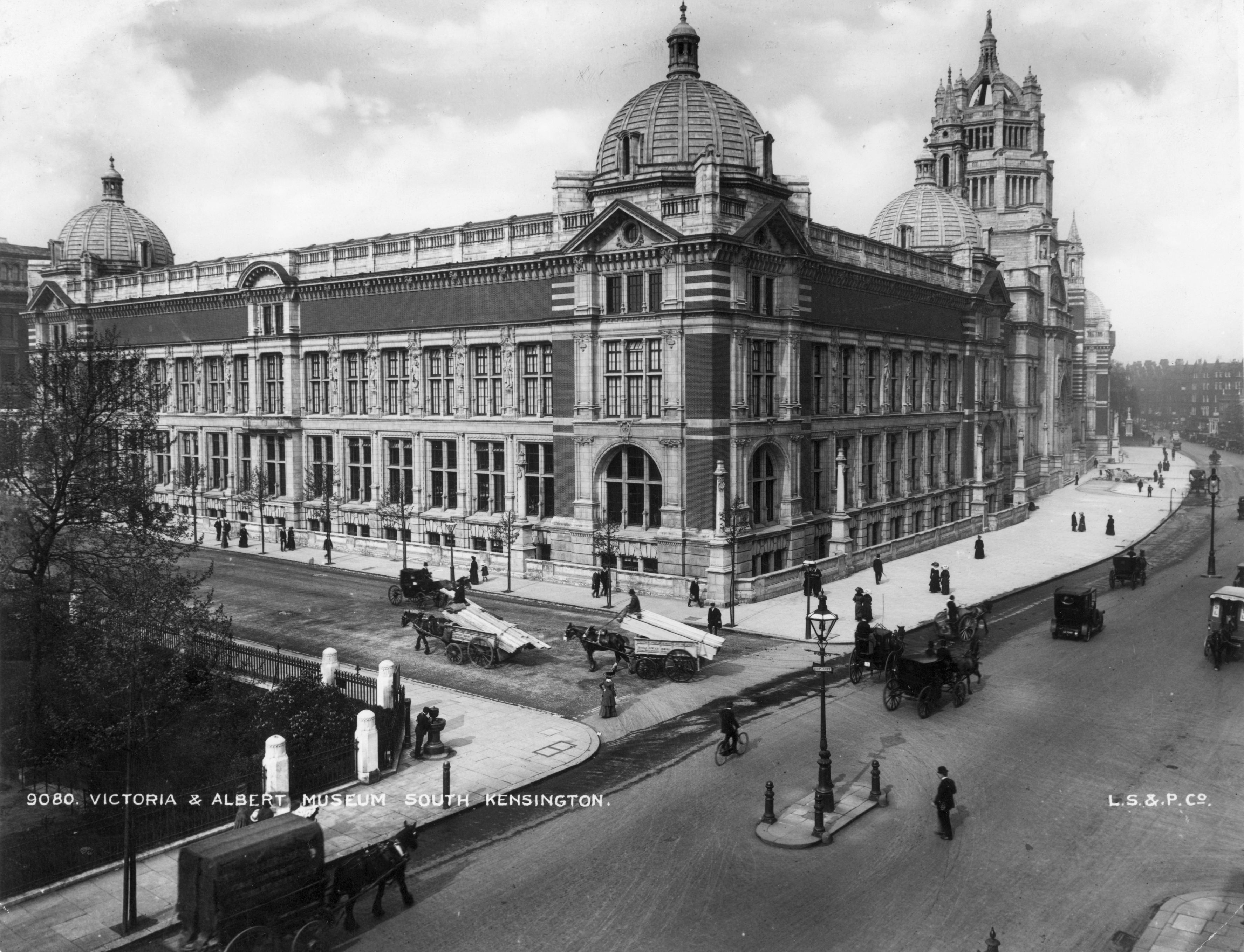
The V&A tries to pin these down, listing creative disciplines from “Biba and Balenciaga to the Ballets Russes and the Sex Pistols to Samurai swords”, along, naturally, with “Roman frescoes, Tudor dress pins, ancient Egyptian shoes, Lucie Rie ceramics, a Piaggio scooter customised by Daniel Libeskind” and a captivating half-scale recreation of an 18th-century English mantua dress made using original techniques by Rebecca Morrison, a V&A/Queen Mary University London PhD student. This shows how valuable the archive is, allowing the researcher to shine a light on the working methods of talented women whose creative role had been hidden in history’s shadows.
The biggest objects include a three-storey section of the Poplar Robin Hood Gardens housing estate demolished in 2017-18, the 1937 Kauffman Office, the only complete Frank Lloyd Wright interior outside the United States, and the Frankfurt kitchen, a revolutionary and hugely influential fitted kitchen design from 1926 by Margarete Schütte-Lihotzky. Loud and clear, the V&A Storehouse celebrates what curators call the “primacy of the object” while employing, technically and creatively, virtually intangible new technologies. It will, I’m sure, be put to good and exhaustive use.
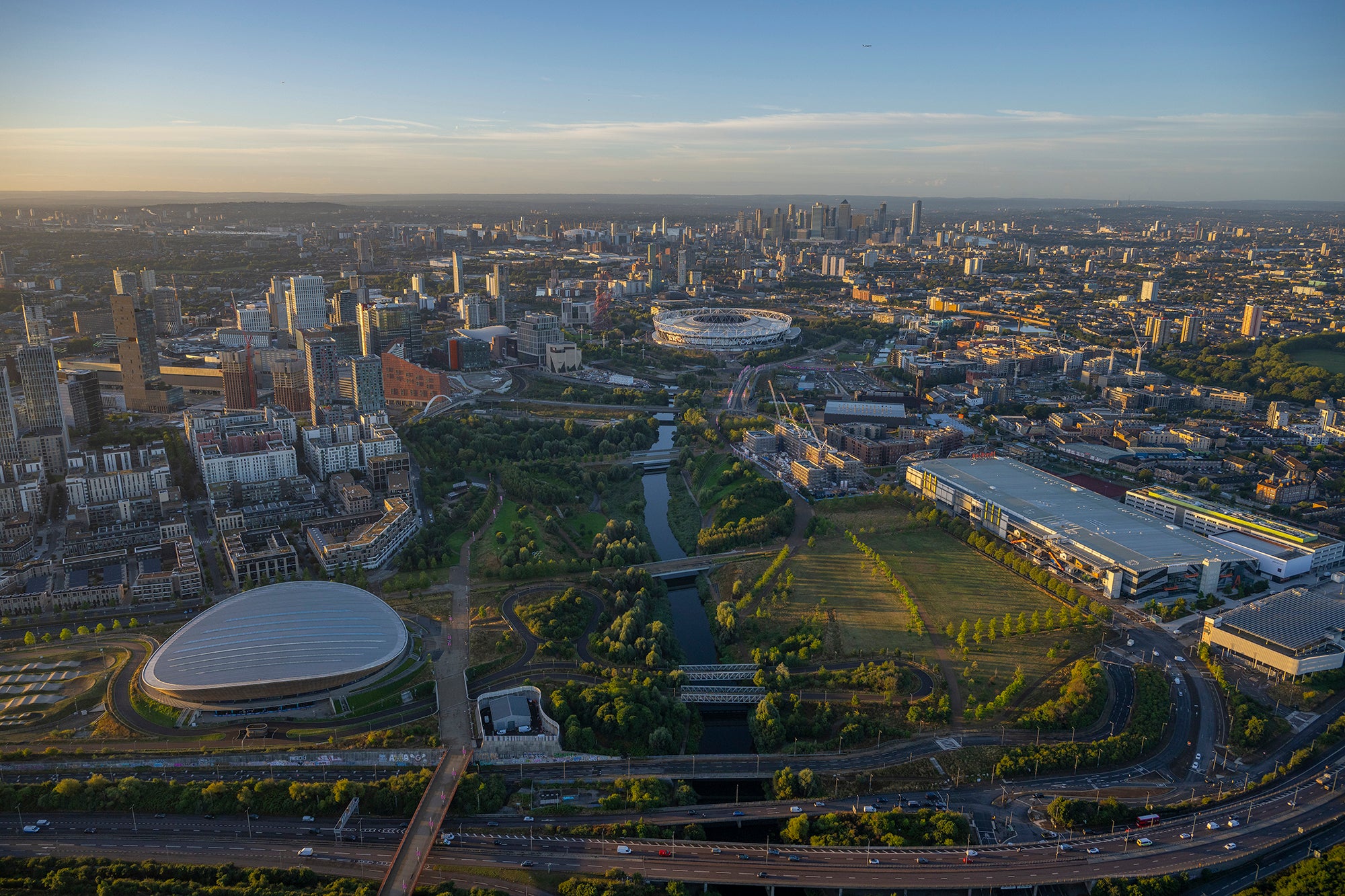
The one thing I find unsettling is the Storehouse’s wider setting. I know this great stretch of Stratford is new, much of it under construction. There is clearly a long way to go before it feels comfortable in its hard brick and concrete skin. It feels more like a scion of a Soviet new town overlain by Milton Keynes. While the Queen Elizabeth Olympic Park is a welcome respite, the dull blocks of fast-sprouting high-rise flats and the stiff parade of new cultural institutions set on a concrete platform halfway between the V&A Storehouse and Stratford station are somehow glum.
Students here enliven the otherwise austere concrete London College of Fashion while Sadlers Wells East is overly bricky, the yet-to-open V&A East Museum remains awkward (“The world’s largest Pizza Hut,” says a commentator on the Dezeen website) and the mood of the new BBC Music Studio’s architecture is lamentoso.
What passes for streets – wide, Moscow-scale avenues – have nothing in the way of incidental detail or potential signs of quotidian urban life. Old Stratford, which wasn’t all a wasteland before the super-hyped 2012 London Olympics, seems to have been erased. There is a gap here that needs to be minded. The V&A Storehouse looks set to do its engaging best.






Join our commenting forum
Join thought-provoking conversations, follow other Independent readers and see their replies
Comments